Junagadh, Hyderabad & Other Prominent Princely States
Recap: How Partition Happened: Seeds of Division to Midnight’s Freedom
In the last blog of the “India After 1947” series, we traced the layered and turbulent decades that led up to India’s independence and partition. From the earliest political sparks and the shifting role of Muhammad Ali Jinnah, to the rise of the Muslim League and the complex outcomes of the 1937 and 1946 elections, each chapter revealed how division grew steadily under British rule. We explored major turning points like the Cabinet Mission Plan, the violent Direct Action Day, the interplay of World War II politics, and the hurried decisions that ultimately shaped the boundaries between India and Pakistan. Above all, it was a story of real lives transformed and uprooted by long-standing hopes, deep fears, and the tragic human cost of partition.
Introduction: 565 Kingdoms at the Crossroads
At midnight on August 15th, 1947, as India and Pakistan celebrated independence, the subcontinent faced an enormous challenge: integrating 565 princely states, which covered one-third of the territory. While most states chose to join one of the two nations, some held out hopes of remaining independent. Balochistan became part of Pakistan. States like Jaisalmer, Jaipur, Mewar, Marwar, and Patiala joined India, sometimes after resistance. But Bhopal, Travancore, Junagadh, and Hyderabad stand out for their complex struggles.
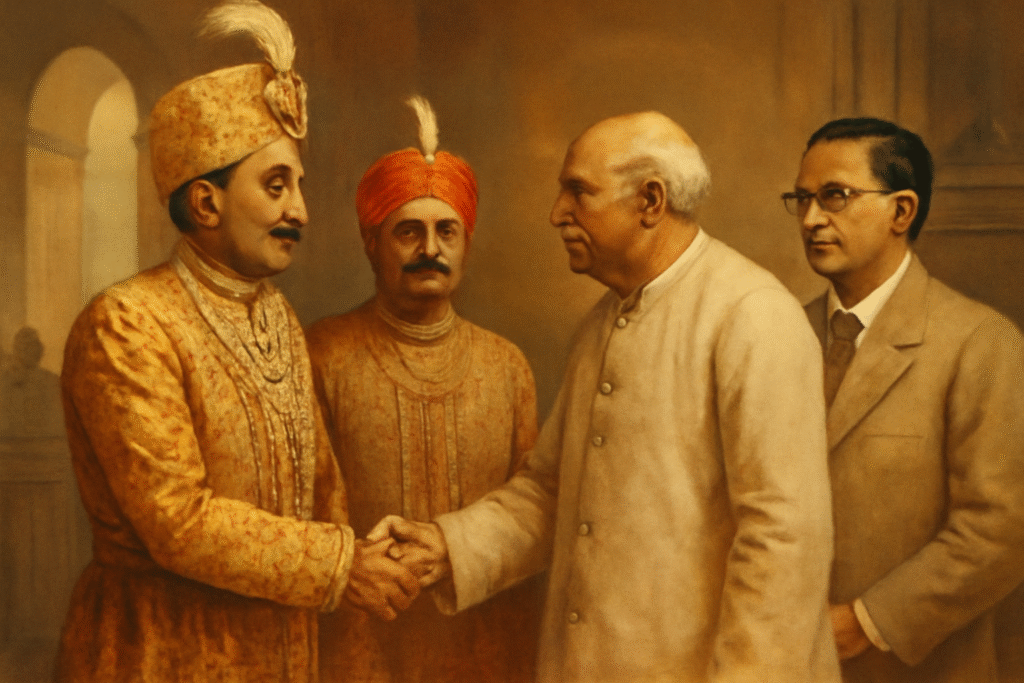
Bhopal: The Reluctant Heartland
Bhopal, ruled by Nawab Hamidullah Khan, initially sought independence and even entertained forming a federation of independent princes. The Nawab was close to both Jinnah and Mountbatten; Jinnah promised him the post of Secretary-General if Bhopal joined Pakistan. But Bhopal’s geographic position at the heart of India made accession to Pakistan impossible.
Mountbatten pressed the Nawab to sign the Instrument of Accession for India, promising to keep the document sealed until August 25, 1947. The Nawab initially refused, steadfastly maintaining Bhopal’s independence.
Meanwhile, popular revolt against the Nawab’s rule intensified. The Praja Mandal (people’s movement) organized protests and strikes. The Nawab’s administration resorted to arrests and crackdowns. The mass agitation made his situation untenable.
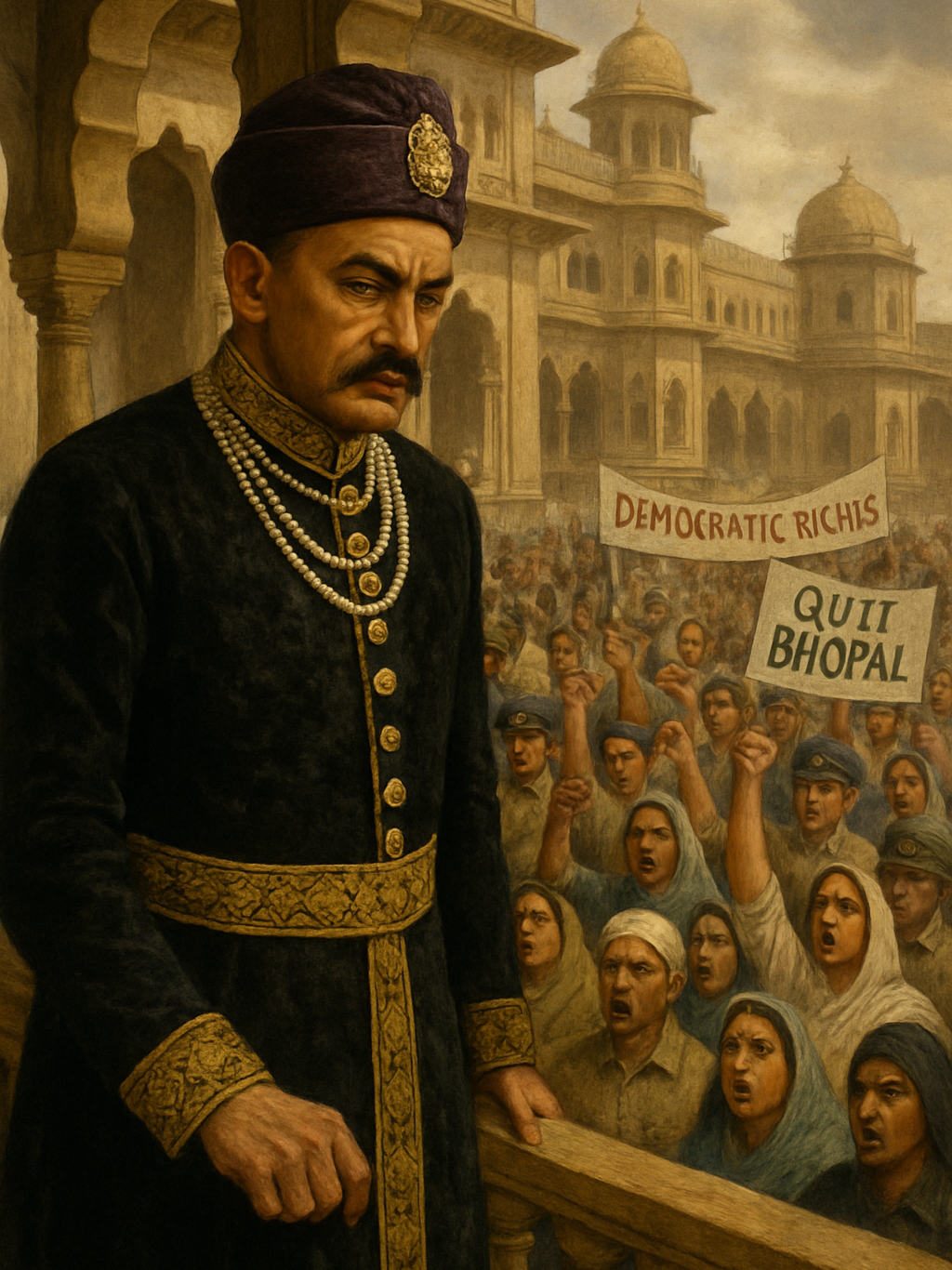
Ultimately, the Nawab delayed accession for nearly two years, finally signing the Instrument of Accession in February 1949. Bhopal was formally merged into the Indian Union and administered as a Part C state starting June 1, 1949. Sardar Vallabhbhai Patel congratulated the Nawab on the “victory of the people,” and Hamidullah Khan retained a titular status until his death in 1960.
Travancore: Coastlines & Calculations
Travancore’s King Balram Verma and Diwan C.P. Ramaswamy Iyer declared independence on June 11, 1947, envisioning economic viability via their long coastline. Yet public opinion soon turned decisively for joining India, sparking revolts and assassination attempts on the Diwan.
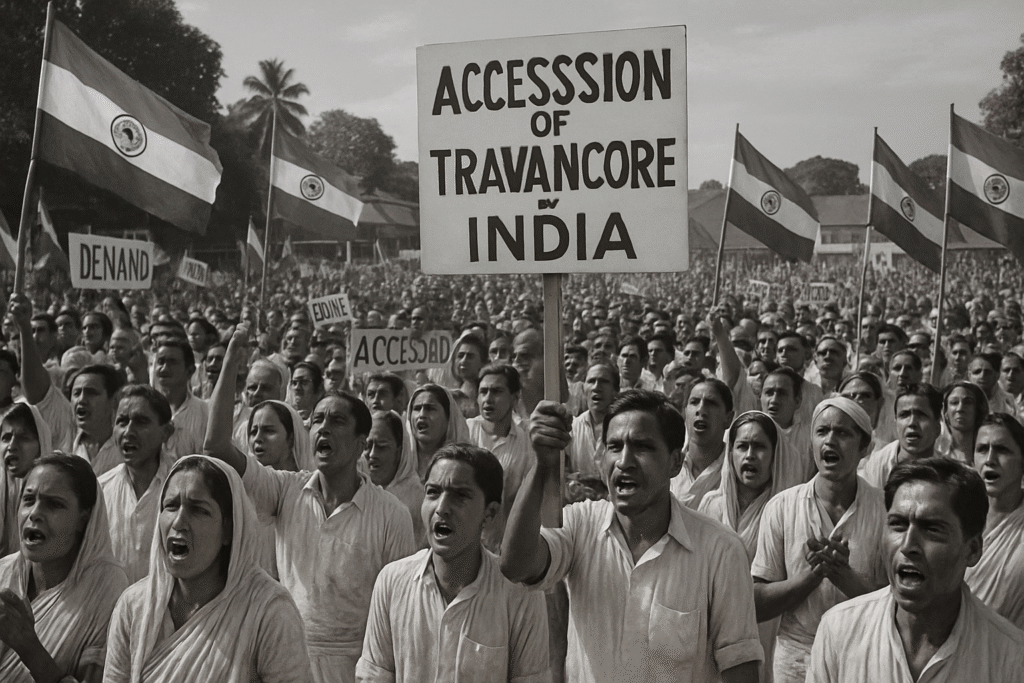
Just three days before independence, on August 12, 1947, Travancore reversed course and acceded to India.
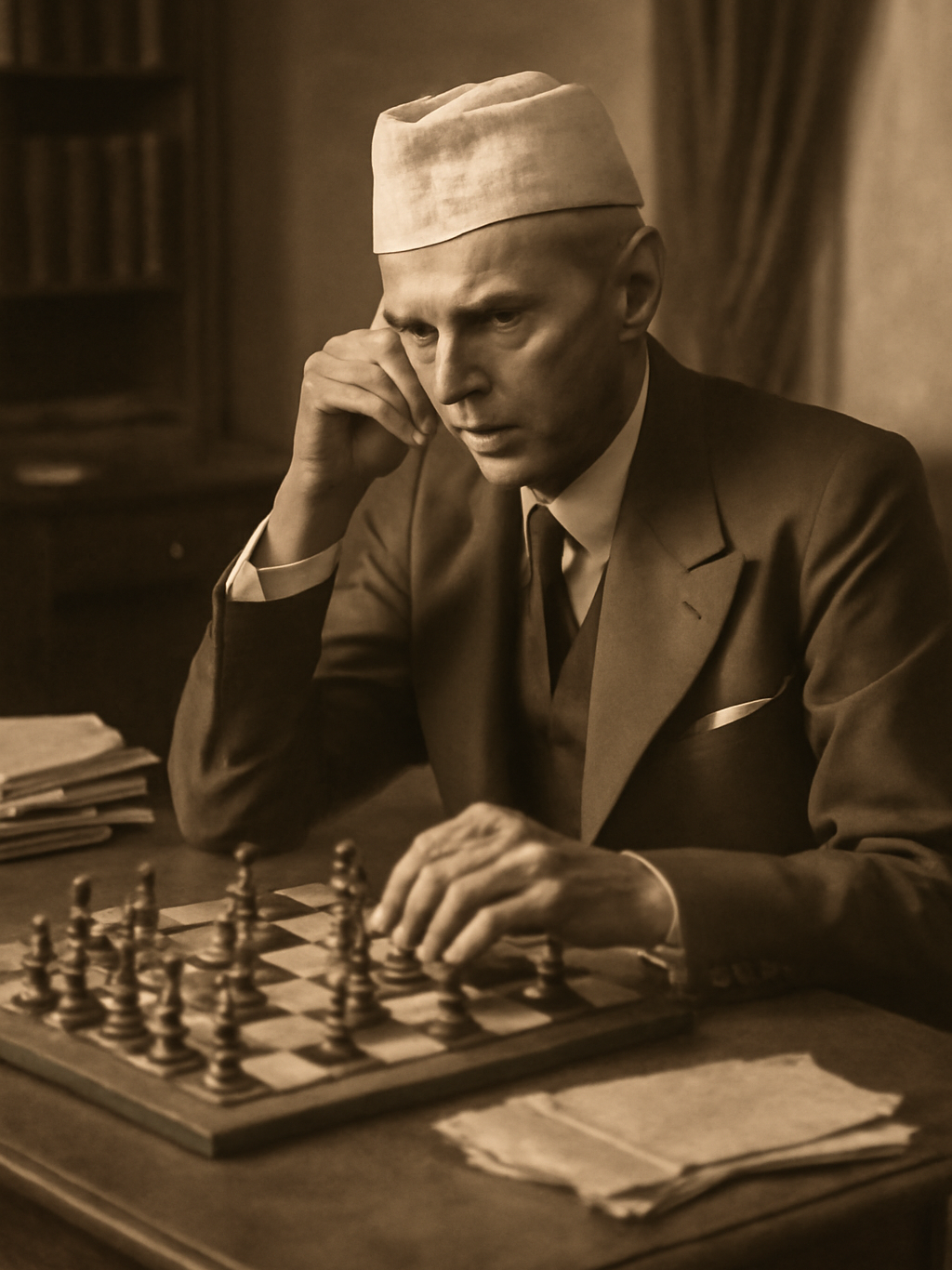
Jinnah’s famous metaphor classified Hyderabad as “the king of the chessboard,” Kashmir as “the queen,” and Junagadh as “just a pawn.”
Junagadh: A Pawn in the Chessboard
Junagadh’s Nawab, Muhammad Mahabat Khan III, shocked India on August 17, 1947, by declaring accession to Pakistan, despite an 85% Hindu population and no territorial contiguity with Pakistan. This caused an uproar within India.
Jinnah paid the Nawab Rs. 8 crore to boost Junagadh’s infrastructure and military strength, reportedly influencing his decision.
His Diwan, Sir Shah Nawaz Bhutto (father of future Pakistani PM Zulfiqar Ali Bhutto), was a key influencer. India’s Sardar Patel pressed Mountbatten for military action but was rebuffed.
VP Menon negotiated with Junagadh’s smaller Hindu principalities Mangrol and Babariyawad, which acceded to India. Junagadh responded militarily, prompting further Indian intervention.
The Nawab fled to Pakistan in October 1947. A plebiscite held in February 1948 showed over 190,000 voted for India compared to 91 for Pakistan. Pakistan raised the issue at the United Nations, where it remains unresolved till today.
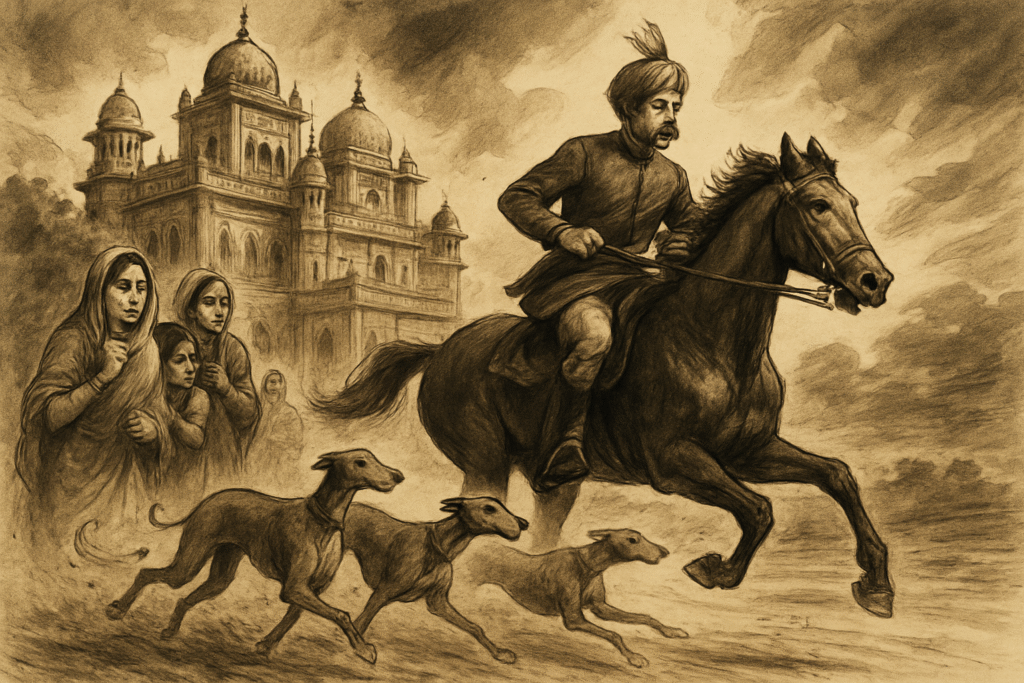
An interesting fact about the story of Junagadh is that the Nawab fled to Pakistan, leaving behind his wife and son, citing delays they caused, while hurriedly departing with his pet dogs.
Hyderabad: The King of the Chessboard
This metaphor underscored Hyderabad’s immense geopolitical and symbolic importance in the balance of power.
Hyderabad was the largest and wealthiest princely state in India in 1947, located in the Deccan Plateau, surrounded completely by Indian territory, without access to the sea. The state was ruled by Nawab Usman Ali Khan, also known as the Nizam of Hyderabad, widely recognized as one of the richest men in the world at the time. His vast personal wealth and the state’s resources made Hyderabad a powerful entity by itself.
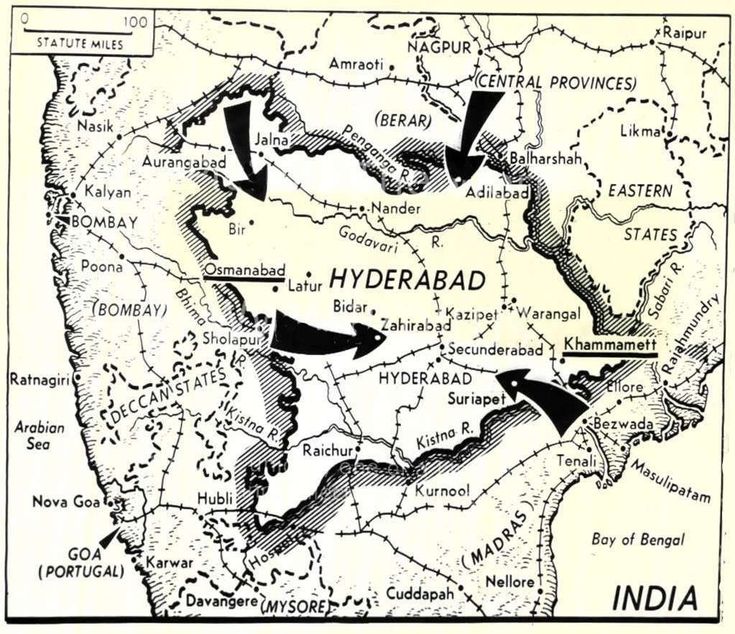
Supporting the Nizam was his secretary, Qasim Rizvi, leader of the Majlis-e-Ittehadul Musilmeen (MIM)—a political party that strongly opposed accession to India. Today, the MIM is known as the All India Majlis-e-Ittehadul Musilmeen (AIMIM).
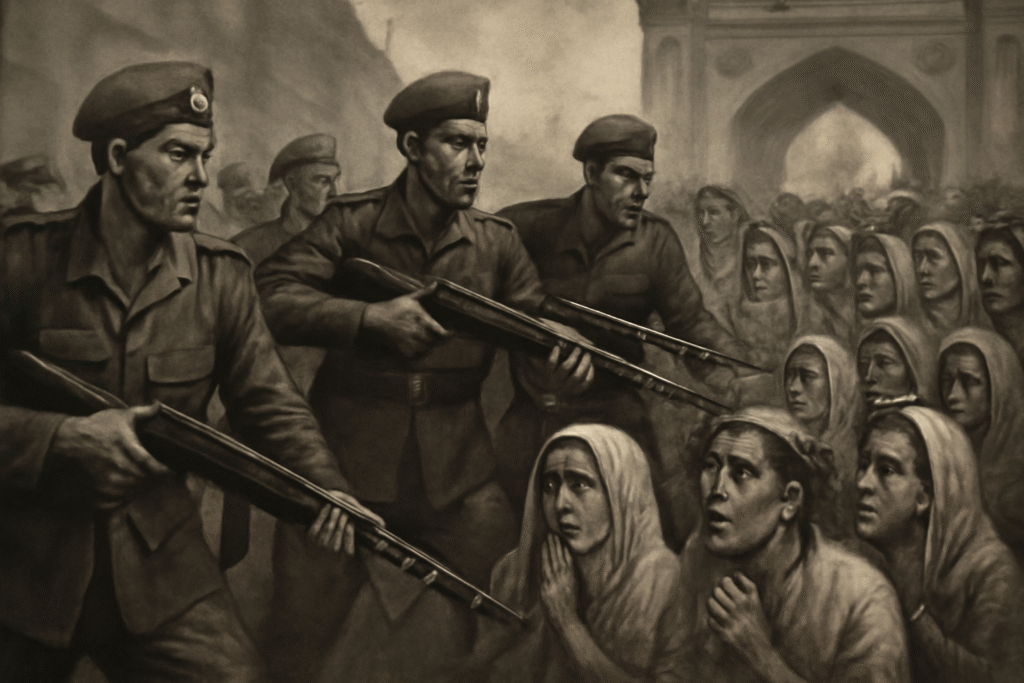
On June 12, 1947, the Nizam declared Hyderabad to be an independent nation, resisting the inclusion in either India or Pakistan. This declaration set the stage for a tense standoff between Hyderabad and the Indian government.
The state’s demographic composition made the situation complex. Hyderabad’s population was approximately 80% Hindu, with Muslims constituting about 15%. Despite the Hindu majority, Muslim rule persisted, backed firmly by the Razakars—a paramilitary force formed and led by Qasim Rizvi. The Razakars systematically used violence, intimidation, and atrocities against the Hindu population to suppress dissent and maintain Muslim supremacy. Their acts included looting, forced conversions, and brutal suppression of opposition. The terror they spread was a key factor escalating tensions.
Hyderabad further deepened its antagonism toward India by providing Pakistan a loan of Rs. 20 crore to purchase arms and build military infrastructure—an act that violated the standstill agreement Hyderabad had signed with India, which was supposed to maintain peace while negotiations were ongoing.
The Indian government initially tried to resolve the impasse peacefully. Prime Minister Jawaharlal Nehru and Home Minister Sardar Vallabhbhai Patel negotiated with Hyderabad, offering terms that included limited Indian intervention, only allowed during internal emergencies, the right for Hyderabad to retain control over its own constitution and internal governance and a private army capped at 20,000 soldiers
Patel reluctantly accepted these terms as a reasonable compromise. However, the Nizam was adamant about complete independence and refused to accede, escalating the standoff further by appealing to the United Nations for international recognition of Hyderabad as a separate nation.
Throughout this tense period, Qasim Rizvi’s Razakars continued their campaign of violence and intimidation against Hindus, further destabilizing the region and worsening the humanitarian situation.
By late 1948, India’s patience had worn thin. On September 13, 1948, faced with Hyderabad’s intransigence and the escalating terror, India launched Operation Polo, also referred to as “Operation Caterpillar.” Indian armed forces attacked Hyderabad from all directions.
After intense fighting that lasted only 108 hours, Hyderabad’s forces surrendered. On September 17, 1948, the Nizam formally announced Hyderabad’s accession to India over All India Radio, marking the end of Hyderabad’s bid for independence and its integration into the Indian Union.
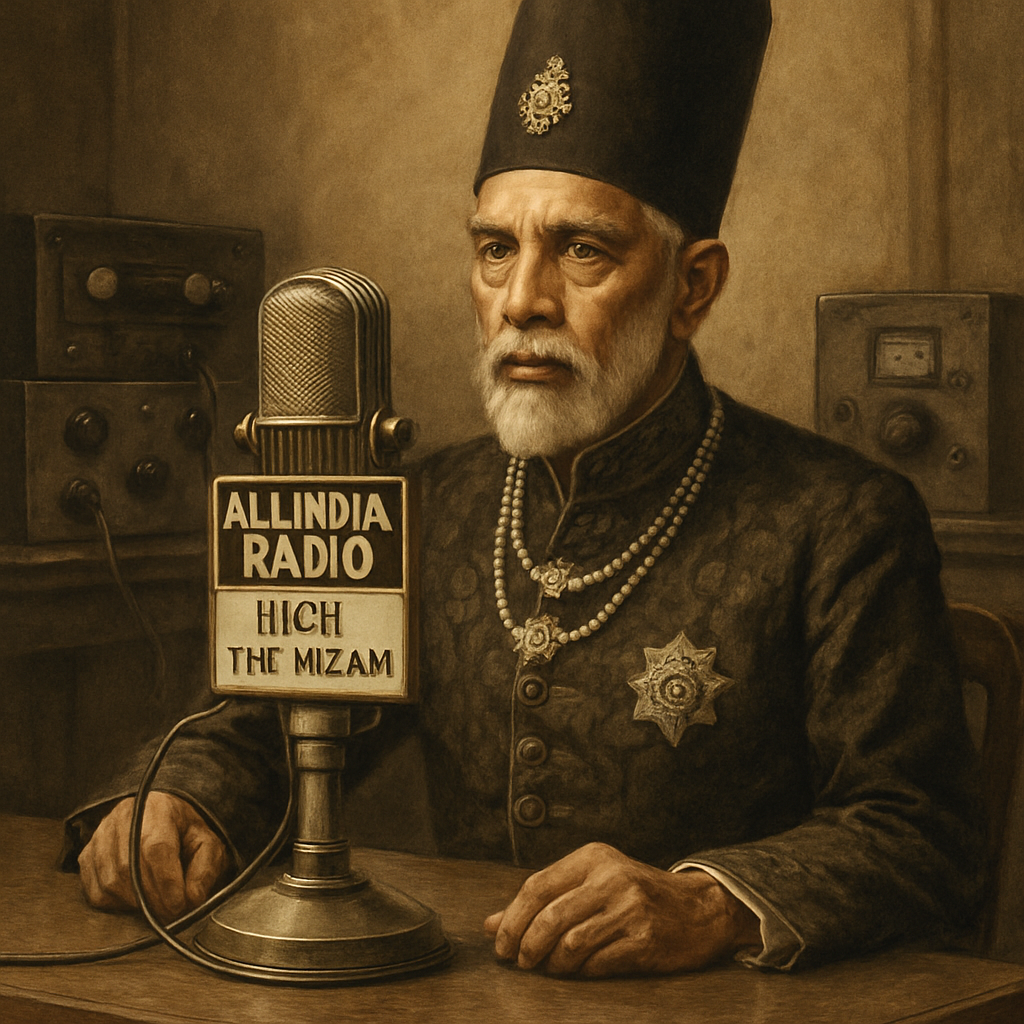
Following the annexation, Qasim Rizvi was arrested and imprisoned until 1957. Upon his release, he migrated to Pakistan and handed over the leadership of the MIM (now AIMIM) to Abdul Wahid Owaisi, who was the grandfather of current AIMIM leader Asaduddin Owaisi.
The integration of Hyderabad also coincided with the end of the Telangana Rebellion, a communist-led peasant uprising against the feudal landlords, many of whom were allied with the Nizam’s regime and the Razakars. The rebellion peaked during 1945-1948 and was eventually quelled after the establishment of Indian administrative control post-annexation.
The story of Hyderabad’s accession stands as one of the most dramatic and critical chapters in the political unification of India, showcasing a complex interplay of wealth, power, communal tensions, and political diplomacy.
Conclusion: Unifying a New Nation
Despite resistance, Sardar Vallabhbhai Patel and V.P. Menon successfully integrated 552 princely states into India. Only Balochistan and some minor States such as Bahawalpur, Khairpur, Chitral, and others such as Kalat and Hunza acceded to Pakistan.
India’s unity was fortified through these remarkable political and military efforts, shaping its destiny as the world’s largest democracy.
Coming Next: Blog 1.4
Next: “The Story of Kashmir: Accession, War and the Seeds of an Endless Dispute,” detailing Kashmir’s pivotal conflict and ongoing controversy.
References (Books):
1. The Story of the Integration of the Indian States– V.P. Menon (1956)
2. The Transfer of Power in India – V.P. Menon (1957)
3. Freedom at Midnight — Dominique Lapierre & Larry Collins (1975)
4. The Discovery of India — Jawaharlal Nehru (1946)
5. The Transfer of Power 1942–47 (12 Volumes) — Edited by Nicholas Mansergh
6. Patel: A Life – Rajmohan Gandhi (1990)
7. India After Gandhi – Ramachandra Guha (2007)
References (TV Shows/Movies):
1. Pradhanmantri TV Series- ABP News (2013)
2. Freedom at Midnight- Sony Entertainment Television (2024)